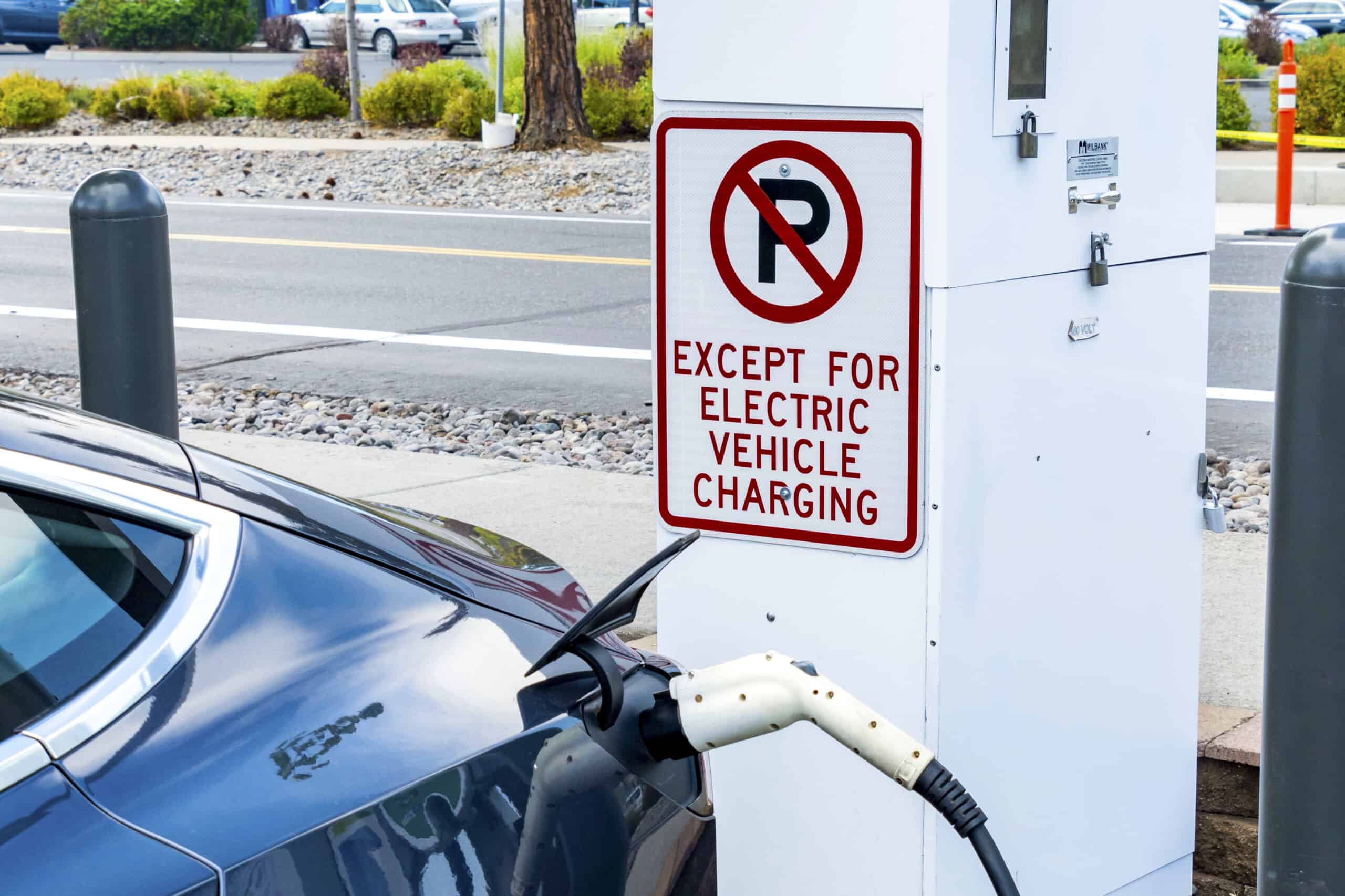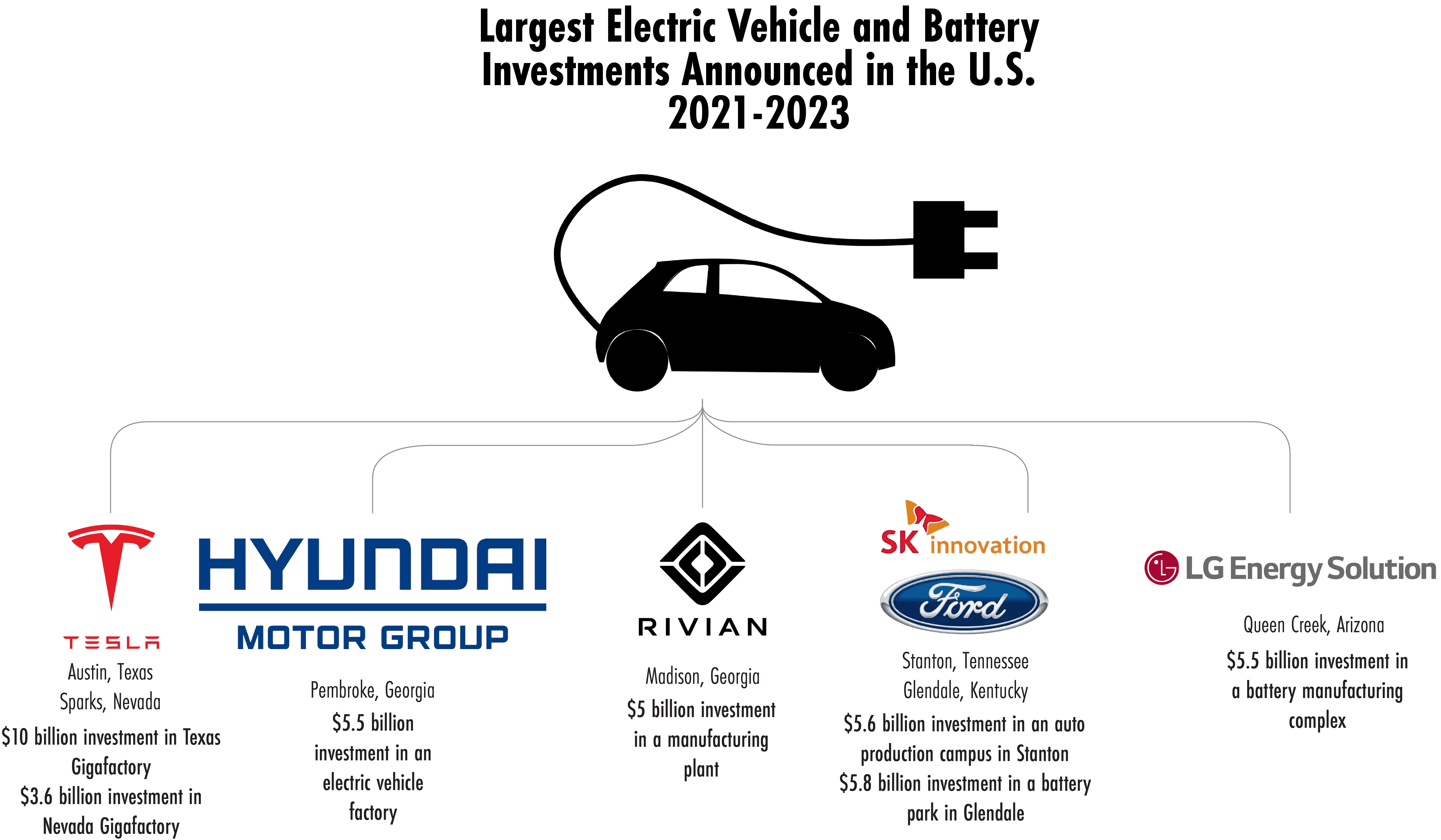
The electric vehicle and battery industry has become a key battleground in the strategic competition between China and the United States. In the U.S. alone, that has translated into an investment boom: Since 2021, private companies have announced $137 billion worth of investment into the sector, according to data recently published by the White House.
Getting the tech right is one thing, however: also vital to the future of EVs is putting the infrastructure in place, such as charging stations, to support their acceptance among consumers.
This week, The Wire looks at the largest investments private companies have announced in recent years, and examines whether the United States and China are matching private investment with public infrastructure development in this competitive area.
THE EV RACE
The Inflation Reduction Act, passed in 2022, has helped spur U.S. private sector investment in EV manufacturing by providing tax credits for manufacturers as long as their vehicles undergo final assembly in North America. This provision has proven controversial among U.S. allies including South Korea, which is concerned about the policy’s market distorting effects. Even so, Korea’s own Hyundai Motor Group is among the private companies that have announced billions of dollars of investment in EV production in the United States.
Below are the top five largest private investments in the sector which have been announced in the last three years:

As private investment in EV technology increases, development of charging stations has also seen an uptick. Over the years, federal and state governments, utility companies and private companies have collectively announced nearly $20 billion in investment in such stations, according to Atlas Public Policy, an advisory firm.
By the end of 2022, more than 136,000 public charging ports in more than 53,000 locations had been installed in the United States, according to data from the U.S. Department of Energy. With more than three million EVs on American roads, that works out at one charging port for every 22 electric vehicles. However, only 31,000 of these ports are high-speed chargers, those most likely to draw people away from plugging in at home.

As EV adoption becomes more widespread, public charging ports will only grow in importance.
“EVs are trickling into some of the underserved communities, where there are no garages in which to put a home charger,” says Bill Ferro, founder of EVSession, an analytics firm that tracks charger reliability. “If EVs are going to continue to grow towards the government’s 2030 prediction… it’s going to be more than just people [charging their cars] in garages.”
The task ahead remains daunting. Atlas Public Policy estimates that up to $166 billion will need to be invested in this crucial infrastructure simply to facilitate widespread electrification of trucks by 2035. That’s based on a projected need for between 470,000 to 560,000 charging ports to be installed at depots, and hundreds of thousands of additional ports needed near highways for long-haul trucks.
What we see is a lot of times, people will pull up in their car and it will take them two or three tries across two or three different units at that station to get a successful charge.
Bill Ferro, founder of EVSession, an analytics firm that tracks charger reliability
President Biden has touted investment in infrastructure as a means by which the U.S. can compete with China in leading the 21st century economy. But behind the competition, both countries face similar challenges in making EV charging more widely accessible. The problem in the U.S., according to Ferro, is that many chargers simply don’t work.
“The problems are pretty well-documented — everything from the screen being blank, to the charger cable being stepped on or cracked, to the cables being cut,” Ferro says. “What we see is a lot of times, people will pull up in their car and it will take them two or three tries across two or three different units at that station to get a successful charge.”
CHINA CHARGING
Meanwhile, in China, more than 710,000 new energy vehicles (NEVs) were purchased in May 2023 alone, or nearly a third of all vehicles sold in China. (NEVs include both electric and hybrid vehicles.) In the same month, about 59,000 new public EV charging ports were installed, which works out to one port for every 8.3 vehicles sold. The Chinese government has even bolder ambitions, with a pilot project introduced in February that aims for a 1:1 ratio between new ports and NEVs brought into service for public purposes, such as delivery and sanitation vehicles, between 2023 and 2025.
Yet while charging ports may be plentiful, recent research suggests that their usage remains stubbornly low, with the same maintenance issues plaguing the U.S. charging network also found in China. In the race to electrify, the winner may be the country that solves this conundrum first.
Below is the average utilization rate for EV charging ports in 10 Chinese cities, based on a survey of 32 cities conducted by the China Academy of Urban Planning and Design. Some of the wealthiest cities in the country, including Shanghai and Shenzhen, record single digit utilization rates, well below the overall average.

Charging ports located near highways are used even less frequently, according to research by the Oxford Institute for Energy Studies. Some record average utilization rates of only 1 percent.
Anders Hove, senior research fellow at the Oxford Institute for Energy Studies, says the problem is partly attributable to the charging ports not being installed in convenient locations.
“Right in the center of Beijing, there was a pair of EV chargers of State Grid on a pedestrian only sidewalk,” he says, referring to the government-controlled State Grid Corporation of China. “They were just still wrapped in plastic. Nobody with an electric vehicle could ever charge there.”
A public EV charging station requires a 20 percent utilization rate to be commercially viable, according to a study by the Belfer Center for Science and International Affairs at Harvard University.
Hove at the Oxford Institute, however, cautions against judging the value of public EV charging investments by the absolute number of charging stations or by how frequently charging ports are used.
“The chargers might be poorly maintained, they might be difficult to hook up and get the charge started,” Hove says. “Looking at these dashboards or these public statistics can only capture one aspect. You need something that really goes to the user experience.”

Aaron Mc Nicholas is a journalist based in Washington DC. He was previously based in Hong Kong, where he worked at Bloomberg and at Storyful, a news agency dedicated to verifying newsworthy social media content. He earned a Master of Arts in Asian Studies at Georgetown University and a Bachelor of Arts in Journalism from Dublin City University in Ireland.



